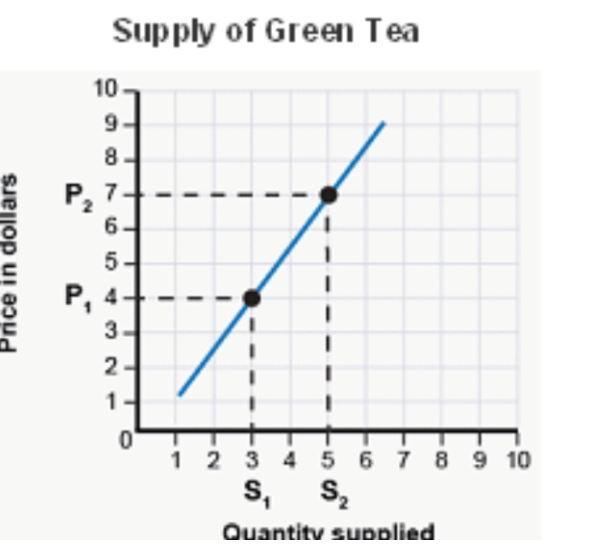The graph shows the price of green tea compared to the amount supplied by producers. What does this graph suggest about green tea? choose two answers. Green tea is elastic in terms of supply. Green tea is inelastic in terms of supply. Green tea is neither elastic nor inelastic. The supply of green tea changes sharply with the price. The supply of green tea does not change sharply with the price.
Answers 2
The information which can be deduced from this graph on green tea are:
B. Green tea is inelastic in terms of supply.
E. The supply of green tea does not change sharply with the price.
What is supply?
Supply can be defined as the total quantity of goods or services that are demanded by consumers at a given period of time.
The types of supply.
In Economics, there are two main types of supply and these include:
- Elastic supply
- Inelastic supply
What is inelastic supply?
Inelastic supply is a situation that occurs when the quantity of goods or services that the producers are willing to produce, doesn't change as the price of goods or services increases.

-
Author:
roquekgiz
-
Rate an answer:
4
AI generated Answer
-
Rate an answer:
0
Do you know an answer? Add it here!
Unable to find an answer to your question?
Don't worry! There are several alternative approaches you can try to resolve your query. Here are some tips to help you find answers in different ways:
- Reframe your question: Sometimes, the way you phrase your question can limit your search results. Try rephrasing it using different keywords or providing more context to get better results.
- Utilize social media: Post your question on social media platforms, particularly those focused on professional or specialized topics. Twitter, LinkedIn, and Facebook groups can connect you with individuals who may have relevant expertise or experiences to share.
- Consult subject matter experts: Reach out to experts in the field related to your question. Many professionals are willing to help and share their knowledge. You can connect with them through email, LinkedIn messages, or by attending relevant conferences or events.
- Use our website to find your question through the search box above, or you can sign up to ask your question for our big educational community. Our experts will review your question, and you will get a quick and quality answer.
- Collaborate with others: If your question is related to a specific project or problem, consider collaborating with others who might have complementary skills or knowledge. Teamwork can lead to innovative solutions and shared insights.
Remember, the process of finding answers often involves persistence, creativity, and an open mind. By exploring various resources, reaching out to others, and being proactive in your search, you increase your chances of finding the information you need. Happy quest for knowledge!
